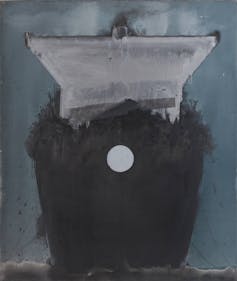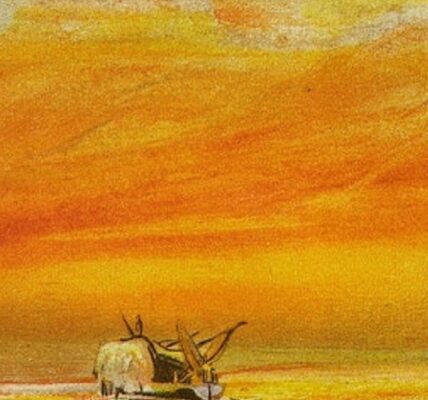Albanian migration has spurred a generation of artists to reflect on issues of identity and belonging
There’s been a great deal of xenophobia directed at Albanian immigrants to the UK recently. It’s easy to argue that Albanians are being scapegoated for the current crisis in Britain’s migration system. But prejudice against Albanians across Europe is not new.
After the collapse of communism in 1990, poverty, financial instability and unemployment forced Albanians to emigrate, many to Greece and Italy. In these two countries, Albanians have been constant victims of discrimination, often facing racist violence.
The 2008 financial crisis hit Italy and Greece harder than most. In recent years Albanians have been migrating to northern European countries, including the UK. Yet again, they are facing similar discrimination.
Many see Albanian migration as a direct outcome of the neoliberal policies made after the country transitioned from dictatorship to democracy. But little is told about the experience of being an Albanian immigrant. Artists, however, have been trying to show their side, examining borders and making complex stories of migration more visible.
Forced departures and transitional landscapes
One of the first Albanian artists to engage with the topic of migration was Adrian Paci. His video work Centro di Permanenza Temporanea (2007), borrowing its title from Italian temporary detention centres, depicts a group of immigrants on a staircase waiting to board a non-existent aircraft. It’s a reference to all the refugees whose dreams of starting a new life in a new country are never fulfilled.
Paci fled to Italy in 1997 during the turmoil that erupted in Albania after the collapse of pyramid schemes on which the Albanian economy was heavily dependent. The country lost half of its GDP as a result. During the crisis, the government remained passive, even when social unrest nearly descended into civil war. Thousands of people lost their lives during the chaos.
In his video Intervista (1998), Anri Sala, merges media footage of the 1997 events with footage from 1977, when the country was still ruled by longtime autocrat Enver Hoxha and under a communist system. The 1977 footage shows the artist’s mother, Valdete Sala, a former socialist leader, attending a congress of the Labour Youth Union of Albania. In this footage, she wears the red partisan scarf and stands with Hoxha.
The footage from 1977 and 1997 is accompanied by new footage of Sala interviewing his mother about the communist past. Sala’s works juxtapose the personal and the political, the communist past that took away fundamental human freedoms and the post-socialist reality that brought the chaos of 1997.
Artists who remained in Albania after the mass exodus of the 1990s captured the changes that came with the transition from state socialism to neoliberal capitalism, including the depiction of empty towns and villages, typical in post-socialist Europe.
The emptiness of these villages highlights the failures of the capitalist order. The closure of state-owned factories that employed large swaths of the population and extensive privatisation brought about the decline of towns, which forced people to migrate abroad for employment.

A haunting feeling of a past long gone and of a transition that never reached a conclusion is prominent in Edi Hila’s post-1990 paintings. His series Migrations (1997), painted in an almost mourning grey colour, is a commemoration of those who drowned in March 1997 while crossing the Adriatic Sea, most of whom were women and children.
The tragic event took place when the Albanian ship Kateri i Radës sank after colliding with an Italian vessel in the strait of Otranto. This was one of the many ships which departed from the Albanian port city of Vlora carrying Albanians trying to escape the chaos of 1997. At that time the Italian navy was instructed to prevent at any cost the unauthorised entry of Albanian immigrants to Italy.
Hila’s recent series Paradox (2005), containing timid additions of warmer colours, represent stills of everyday life in a changing environment: unfinished buildings, people bathing in front of the same sea where human lives were once lost, communist bunkers that remain reminders of the traumatic past. Life continues. But life here is haunted by the tragedies of those who tried to flee without reaching safe shores.
Searching for “home” and a precarious present
Many Albanian immigrants who built new lives abroad continue to search for a sense of belonging. In their performance, Voyage Transparent (2004), Canada-based artists The Two Gullivers (Flutura Preka and Besnik Haxhillari) drag a transparent suitcase, a metaphor for the invisible “luggage” (such as memories and emotions) that immigrants carry with them. The artists obtained this suitcase in the Albanian capital Tirana in 1994 and have since performed the act across the world. At each performance, it remains unclear whether the suitcase reaches its destination.
For photographer Enri Canaj, who grew up in Greece, the search to understand “home” takes him back to Albania. In Albania – A Homecoming (2011–2015) he uses photography to capture everyday moments in Albania: women mourning at a funeral, children playing, people going to work. The project is an attempt to get to know the country his parents left behind.
In many cases, Albanian immigrants had to hide their nationality when they arrived in their new country. For instance, in Greece many took new Greek names – a survival strategy because being “invisible” meant less chance to be a target of racism.
Although Albania’s economy has slowly recovered, the country remains one of the poorest in Europe. The 2008 economic crisis and the recent pandemic brought more unemployment and precarity. Corruption has also played its role in perpetuating social inequalities.
Pleurad Xhafa’s 200 Million Euro (2020), which was temporarily exhibited in the National Theatre in Tirana, is a direct response to Albania’s reality of normalised corruption. The installation consists of 500 euros inside a glass cube. It was created to protest the lack of transparent wealth redistribution and illegal privatisations – ironically including one which led to the demolition of the National Theatre itself.
The history of immigration is repeating itself as people continue to seek asylum around the world, including in the UK. This art continues to be so prescient because the cycle never ended for Albanians and so we can continue to understand their experience through these powerful works about displacement.








